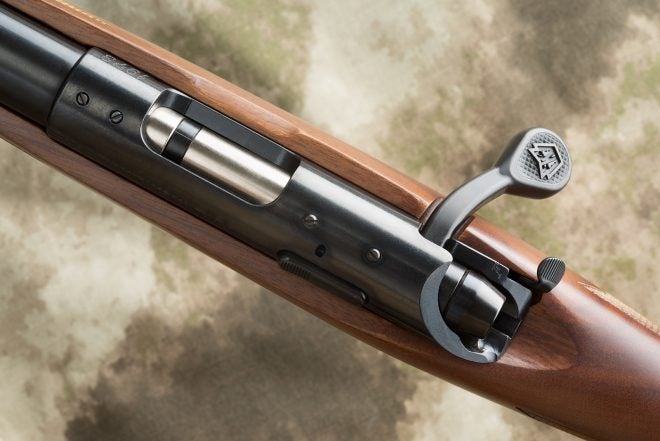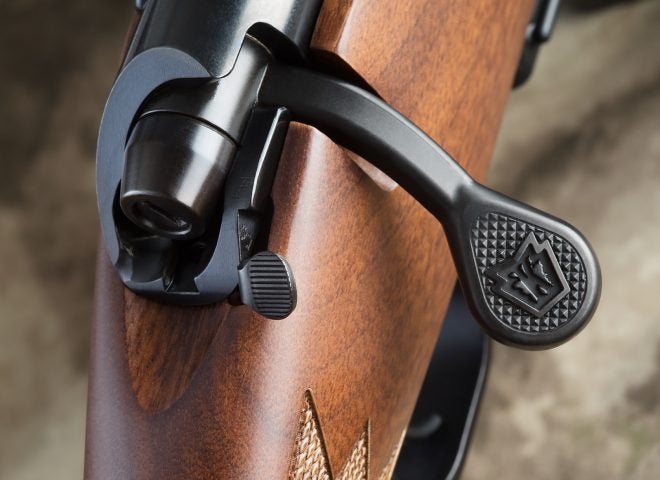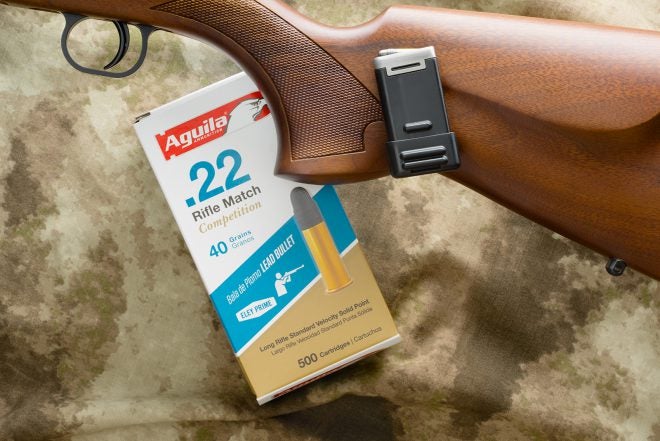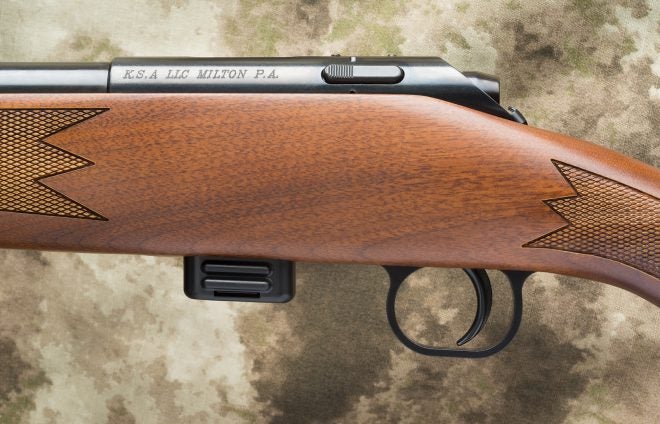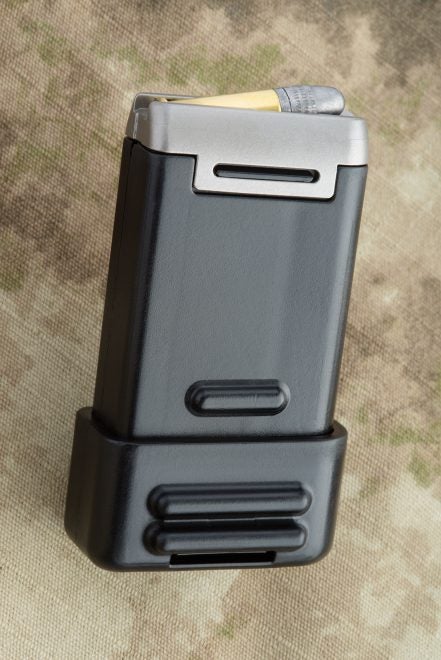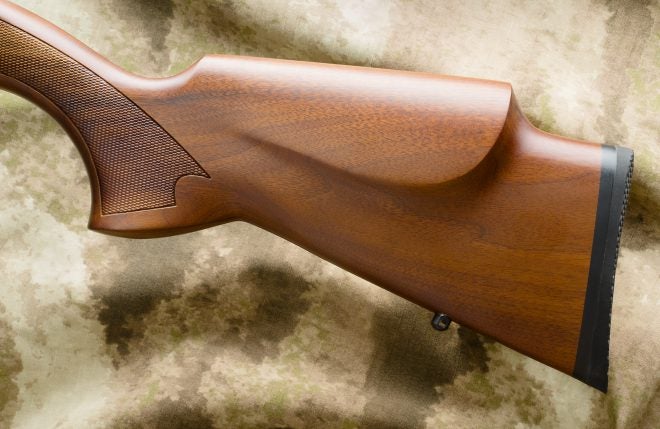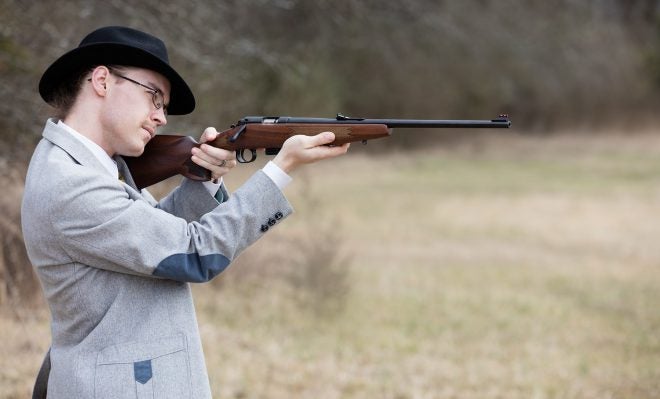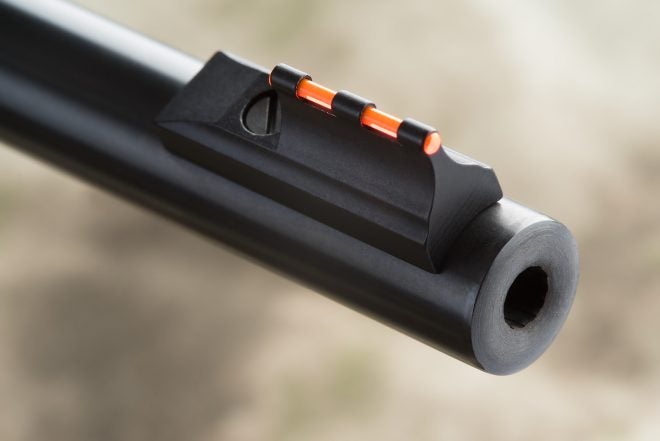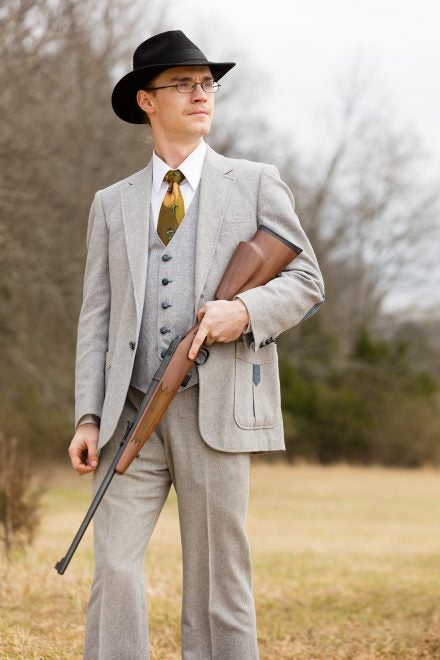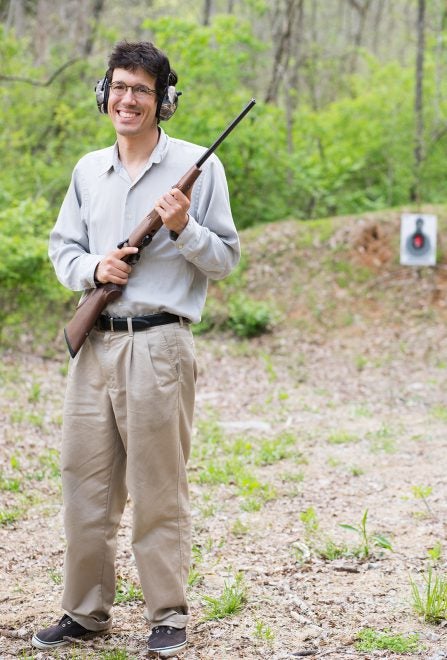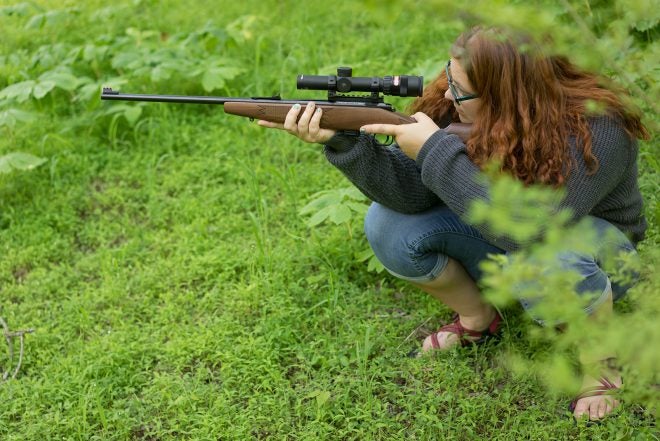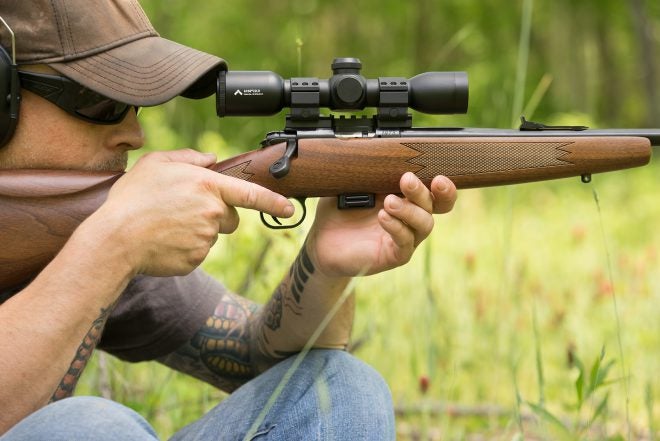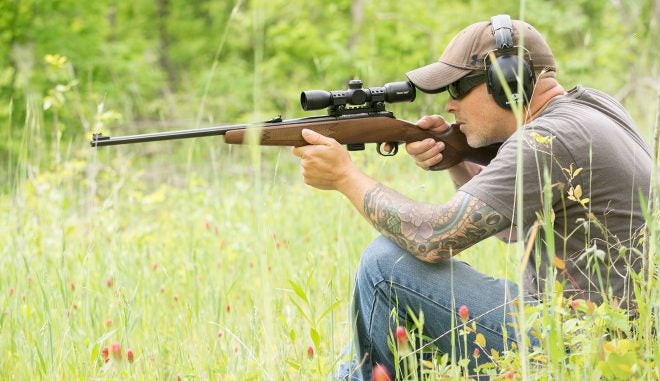Keystone Arms 722
Oleg Volk 04.25.16

Quality rimfire rifles used to be heirlooms that would last multiple generations. Once, I got to shoot an 1890s slide action Winchester that was tight, accurate, and reliable despite over a century of service. Of course, lower grade designs existed, but even the budget single-shot 22s of the 1930s were solid enough to survive in considerable numbers. Not all currently produced 22s can hope to last that long.
Keystone Arms (known up to now for its Crickett line of kids’ carbines) model 722 makes an excellent claim to longevity and relevance.
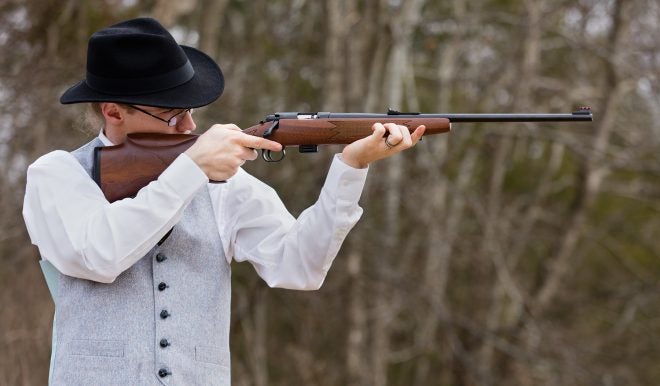
Made in three variants, the simple $262 Sporter, the more refined $315 Classic (shown here) and the $340 heavy barrel Varmint, it’s an original design made extremely well. The bolt has a locking lug opposite of the handle, which acts as a second lug. Symmetrical design operates with only 50 degree throw, easily clearing even the largest scopes.
The safety is a lever (forward for fire, back for safe). It clicks very positively, but the angle of throw is fairly small, so it’s sometimes hard to tell at a glance it it’s on. On the left of the receiver is the spring-loaded bolt retainer.
The bolt handle is extremely comfortable, and the 1.5″ cycle makes for very quick loading. The action is smooth and easy. The short length of the action permits a 20″ barrel in a very light and compact gun. 13.25″ length of pull makes it feel even smaller.
All variants of Model 722 come with a crisp 2-pound trigger with overtravel adjustment. For me, no changes were necessary; the stock trigger was perfect. Even the trigger guard is a machined part.
You won’t find a magazine catch on this gun. The magazine is retained on both sides by symmetric leaf springs. The magazine locks in solidly until the shooter pulls down on the magazine with moderate effort. The system works reliably and shows no signs of wear with repeated use.
The magazine itself is genius. Thick stainless steel lips are smooth to the touch, and all seven rounds can be loaded quickly and effortlessly. It’s the easiest, most pleasant rimfire magazine I’ve encountered, bar none. Since all external edges are smoothly radiused, a handful of these mags can be carried in a pocket with no worry of them scratching each other. The protrusion below the action is minimal.
The magazines cost around $22 each: while I have several, I found myself just reloading one in the field because the process was so quick and effortless.
In theory, the raised cheekrest makes this carbine right hand only. In reality, it is fairly comfortable for left-handed shooters as well. That’s true of the Classic and the Sporter models, but the thumbhole stock of the Varmint is definitely specific to right-hand only. I will post a detailed review of the Varmint in the near future.
722 comes standard with Williams Firesights, post and semi-buckhorn. The rear is adjustable for windage and elevation. Picking up the front is very easy in any kind of light.
The rifle is lightweight at 4.6lbs and feels even lighter thanks to the good balance. The Crickett legacy may be showing here. It’s one of the easiest 22s I’ve tried to hold steady on target.
The proof of usefulness is in the firing, so off to the range I went. I tested it with Aguila match standard velocity and subsonic ammunition, typically very accurate loads. While the firing went very smoothly, I found myself unable to get groups below 2 inches at 25 yards. The rifle seemed controllable enough, but the bright fiber optic pipe on the front sight obscured at least 2 3/4″ of the bullseye, making precise alignment difficult. After trying several kinds of ammunition, I gave up.
The standard sights are perfectly suited for rapidly shooting targets larger than 11MOA, such as pop cans at 25 yards or ground hogs at 50, but they aren’t good for accuracy testing.
Fortunately, the rifle came with a Picatinny scope rail, and the top of the receiver already drilled and tapped. Unfortunately, the 1″ scope with parallax adjustments in low rings had too big of a front objective and conflicted with the rear sight. I didn’t want to pull the Primary Arms 6x rimfire BDC scope off the ISSC SPA and lose my zero, and so made use of what I had. The rifle was tested the second time with Trijicon 1-4x Accupoint on medium rings and newly arrived CCI Green Tag ammunition, another accuracy standard. My own testing, like the first time, was done prone off of a bag. My friends got to plink with the rifle afterward.
The results were much more encouraging: at 50 yards, with me prone and the rifle over a knapsack, 7-shot groups were all around one inch. That is far from the best performance 722 can turn out, as the centerfire scope has obvious parallax at 50m, and the large triangle reticle was never designed for precision shooting.
Today, I switched to the dedicated Primary Arms 6x rimfire BDC scope in low rings and tried again. The results improved greatly: at 80 yards, CCI Green Tag grouped 1.25″ or about 1.5MOA. Ammunition quality matters: bulk .22 gave 3MOA at best. Even with bulk Federal ammo, the BDC reticle made hits on pop cans placed 50 yards downrange routine.
Shooting off lead sled indoors, without wind, produced 1.25MOA with Aguila Match, 1MOA with Aguila Super Extra subsonic, and 2MOA with Federal 550rd bulk pack. I am guessing Green Tag would have come in at about 1.25MOA as well.
Other than the quick but imprecise iron sights, it’s a strong competitor to CZ455. If optics are used, it gives up nothing at all to the competition. And the issue with the rear sight can be solved two ways: either the sight is drifted out or the Varmint version is used: its heavy barrel with no irons would accommodate even the largest optic. Overall, the rifle is just fun to use. It’s operation is so transparent that it feels like a natural extension of the marksman.
